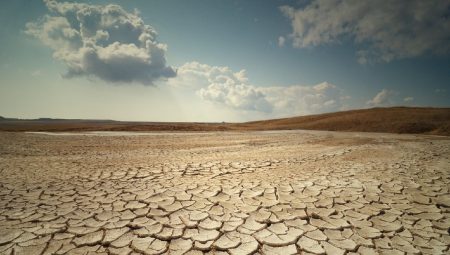January 4, 2018 – The latest projections from 27 different global climate models indicate that a rise of global mean temperatures of 2 Celsius in the next 50 years will increase aridity over 25% of the planet. The projects which were published in the journal Nature Climate Change on January 1, 2018, looked at anthropogenic climate change impacts on aridity. In comparing global warming of 1.5 versus 2.0 Celsius degrees, less than two-thirds of the world’s total land surface would dry out with the former rise versus the latter. That is indeed quite significant.
The study projects climate changes up to the year 2070 and illustrates why the effort to achieve no more than a 1.5 Celsius rise is important. It also should be a wake-up call to national governments that postponing addressing carbon emissions could lead to rapid desertification over a quarter of the planet. Areas most affected will be areas already prone to lower precipitation. Think Australia, the Middle East, much of Africa, and a good portion of Central Asia.
The research defines the time of emergence for aridification (ToEA). The 27 global climate models used come from 11 different countries and are consistent in showing where ToEA occurs. The variations in the models range from 24 and 32% of the Earth’s total land surface being impacted over a 50 year period. The models come from the following organizations:
- Beijing Climate Center and Institute of Atmospheric Physics (China),
- Canadian Centre for Climate Modelling and Analysis,
- National Center for Atmospheric Research, NASA Goddard Institute for Space Studies, Geophysical Fluid Dynamics Laboratory (US),
- Euro-Mediterranean Center on Climate Change (Italy),
- Centre National de Recherches Meteorologiques, and Institut Pierre-Simon Laplace (France),
- Commonwealth Scientific and Industrial Research (Australia),
- Met Office Hadley Centre (UK),
- Institute for Numerical Mathematics (Russia),
- Atmosphere and Ocean Research Institute, Japan Agency for Marine-Earth Science and Technology, Meteorological Research Institute (Japan),
- Max Planck Institute for Meteorology (Germany)
- Norwegian Climate Centre.
In their conclusions, the researchers are direct in advising “early action for accomplishing the 1.5 Celsius temperature goal” to “markedly reduce the likelihood that large regions will face substantial aridification and related impacts.”
In other words, if we stay within the 1.5 Celsius upper limit the people, animals, and plants of this planet can largely continue to thrive with little disruption. But if we reach 2.0 Celsius or higher, all bets are off as runaway desertification will leave enormous swaths of the planet barren.
The picture below is not the prettiest to start the New Year off. But none of us can look at it and say we would be satisfied with this end result because we didn’t institute policies and strategies early enough to not let it happen.









